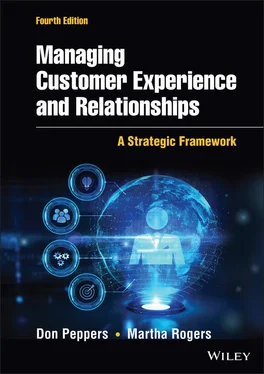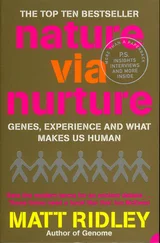How Hard Does Your Customer Have to Work for You To Make Money?
Just what does constitute a better customer experience? In a word, an ideal customer experience would be absolutely frictionless. Except on rare occasions (an entertainment experience, for instance), customers do not really buy from a company just for the enjoyment of the process of acquiring and using some product or service. They buy something because they believe it can help them solve some problem or meet some need. In Clayton Christensen'swords, “When we buy a product, we essentially ‘hire’ it to help us do a job. If it does the job well, the next time we're confronted with the same job, we tend to hire that product again. And if it does a crummy job, we ‘fire’ it and look for an alternative.” 1 The customer simply wants to hire an enterprise's product or service to do a job, meeting whatever need the customer has as inexpensively, conveniently, and expeditiously as possible. If the customer's need were simply to be magically resolved, with absolutely no time or effort or purchase and use of any product at all—well, that would be an ideal customer experience: no experience at all!
A survey a decade ago involved consumers who had had “a recent service interaction over the web or through calling a contact center,” and it found, somewhat counterintuitively, that there was almost no correlationat all between a customer's expressed satisfaction with a company and their stated intention to remain loyal to it. Despite this, there was a strong correlation between a customer's expressed dis satisfaction with a company and their intended dis loyalty. (In fact, the survey found an R-squared, or coefficient of determination, of just 0.13 between satisfaction and loyalty, which is very close to zero. To put this score into perspective, the R-squared correlation between “getting good grades in school” and “achieving career success later in life” is 0.71.) 2
This study, the authors maintain, demonstrates that when it comes to delivering the kind of customer experience required to generate positive business results, a company should focus much more on eliminating the causes of dissatisfaction, and less on any attempt to surprise and delight customers. To put it simply, customers don't necessarily stay loyal to a product or brand because they're satisfied, but they often leave because they're not.
The key driver of customer disloyalty is dissatisfaction, driven by unresolved problems or service issues.
Of course, the participants in this particular survey were chosen because they had had a recent customer serviceinteraction with a company, and as Forrester analysts Harley Manning and Kerry Bodine point out in their own book, 3 customer service and customer experience are not necessarily the same things. Their definition of customer experience is “how your customers perceive their interactions with your company.” This closely parallels our own definition: “the totality of a customer's individual interactions with a brand, over time.” 4
Customer experience is somewhat like a company's trapeze act, while customer service serves as the safety net.
— Harley Manning and Kerry Bodine
Moreover, Manning and Bodine say customer experience is somewhat like a company's trapeze act, while customer service serves as the safety net. On this basis, they maintain that companies are best advised to visualize customer experience success as a kind of pyramid, with three layers. At the foundation is the layer that meets the customer's need. Whatever product or service a company is selling must adequately do whatever job the customer is hiring it to do. Once the experience meets the customer's need, the second layer comes into play: It must be easy. That is, the experience of using the product to meet the need cannot be overly complicated, difficult, or involved. Only if the customer experience “meets the need” in an “easy” way, Manning and Bodine maintain, can a company achieve the top layer of the pyramid: delivering an enjoyable customer experience. This top layer is not limited to business-to-consumer ( B2C) companies; even business-to-business ( B2B) customers can become emotionally engaged with a vendor's product or service experience, provided that it first meets their need in an easy manner. 5
The lesson here is that even if a company's very business consists of selling customer experiences that are inherently entertaining or enjoyable in themselves ( such as an amusement park, cruise line, fine restaurant, or hotel), it will still be pointless for the company to make their experiences enjoyable if they haven't first met the customer's need in an easy way. If, for instance, a restaurant serves the most delightfully enjoyable seared foie gras , but the seating is cramped, or the noise is distracting, or the waiter is aloof or inattentive, then the customer experience will not necessarily be enjoyable overall.

EXHIBIT 3.1The Customer Experience Success Pyramid
The Shoe Salesman's Hidden Motivation
One Saturday afternoon at a shopping mall during the busy Christmas season, a colleague of ours ventured into an athletic shoe store to buy some new running shoes. He was a management consultant who worked with both retailers trying to improve their operations and manufacturers trying to sell products to various retailers. As a result, whenever he went out to buy anything, he was an observant shopper.
He told us that the shoe store seemed to be especially busy that afternoon, so he took a place in line behind two other folks being helped by one of the salesclerks. As he waited, he saw that the salesman offered the same off-brand to each of these customers, who looked like they would have been willing to pay full price for a better brand name. The first customer had been interested in a pair of Nike basketball shoes, but the salesman first brought out this off-brand. They cost about two-thirds the price of the Nikes, and the customer ended up buying them. The same sales process, with the same result, ensued with the next customer, a woman who originally had said she was interested in Reebok cross-trainers. But the salesman talked the customer into trying out the cross-trainers from this off-brand first, and she bought them.
After watching two sales snatched from the jaws of well-known national brands, the consultant's curiosity was aroused. When it was his turn to buy, he first asked the salesman why he had switched the two previous customers to this particular off-brand, which the consultant had never even heard of. After all, he said, these customers seemed to have been willing to pay higher prices for the bigger name brands.
The salesman said that it had nothing to do with pricing or sales commissions, but he seemed a bit nervous at having been found out, and so the consultant persisted. Was the off-brand conducting some contest, then? Or was there perhaps just an extra supply of these shoes that the store needed to liquidate? No, the salesman said, that wasn't it either.
The clerk then looked around and gestured toward all the people crowded into the store on this very busy Saturday afternoon during Christmas season. “Look around,” he said. “See how busy it is in here? I don't even have time to slip away for a coffee or a bathroom break on a day like this, that's how crowded it is!”
So what was it about this particular off-brand? “When they ship their shoes to our store,” the salesman said, “ the laces are already in their shoes , so it saves us a lot of time, not to have to lace up one of the other brands which all come with the laces in a little zip-lock bag inside the box.”
Читать дальше













